Mad Hedge Technology Letter
September 29, 2023
Fiat Lux
Featured Trade:
(WHAT TO DO ABOUT MICRON)
(MU), (SAMSUNG), (SK HYNIX), (SOXX)

Mad Hedge Technology Letter
September 29, 2023
Fiat Lux
Featured Trade:
(WHAT TO DO ABOUT MICRON)
(MU), (SAMSUNG), (SK HYNIX), (SOXX)

The chip maker Micron Technology (MU) fell 5% yesterday, but the stock is amazingly up 4% today.
The see-saw moves are a feature of this strategically important stock to the tech ecosystem and not just a symptom of it.
The stock is highly volatile which is emblematic of a stock that needs to constantly navigate around unstable geopolitics.
The stock's latest whipsaw action stems from the company predicting a steeper loss than anticipated in the current quarter, indicating that an industry slowdown is still weighing on the largest US maker of memory
For chip companies (SOXX), Samsung Electronics Co., and SK Hynix Inc., 2023 has been a crushing time after the glory period of the healthcare lockdown years.
September has been a month where we are experiencing weakening fundamentals as the US consumer is truly stretched.
Customers in big US markets for personal computers and smartphones have slashed orders as they cope with lackluster demand and stockpiles of excess parts.
Many are continuing to dive deeper into debt to make ends meet and that trend will not go away as the US middle class shrinks further as they grapple with soaring inflation.
The lack of consumer strength will mean it will take longer for Micron to return to profits.
Prices for Micron’s products are going up, and the rate of the price jump is increasing and we can probably say that about prices in most industries.
Sales have fallen for five straight quarters. In the three months ended in August, Micron’s revenue declined 40% to $4.01 billion.
The forecast suggests sales will begin to grow again in the fiscal first quarter, which runs through November.
Beijing has proved a thorn in Micron’s side.
This negative headwind has already cut into the US company’s revenue in China — the largest market for semiconductors — in what management has previously called a “significant headwind.”
The outlook remains mixed in the short term. In traditional servers — the computers that are still the mainstay of most data centers — demand remains tepid at best.
Both personal computers and smartphones will return to growth next year, with units increasing by a percentage in the low- to mid-single digits.
To cope with the slowdown, Micron and its peers reined in production, severely reducing supply and helping prices bottom out.
Micron will be demonstrably below peak 2022 output for the foreseeable future. The company plans to continue to run factories at less than full capacity well into calendar 2024. Micron also will further reduce spending on new equipment next year.
These are bad signs in the short term, but the strategic importance of MU puts a solid bid under the stock price.
I wholeheartedly expect the industry outlook to brighten considerably by 2025 — especially as artificial intelligence systems demand new types of more expensive memory chips.
Therefore, every big dip is a buying opportunity in Micron because this stock is resilient.
Luckily, big dips are common in MU and readers should be patient to wait for optimal entry points.
This is a good one to buy and hold for the long term.
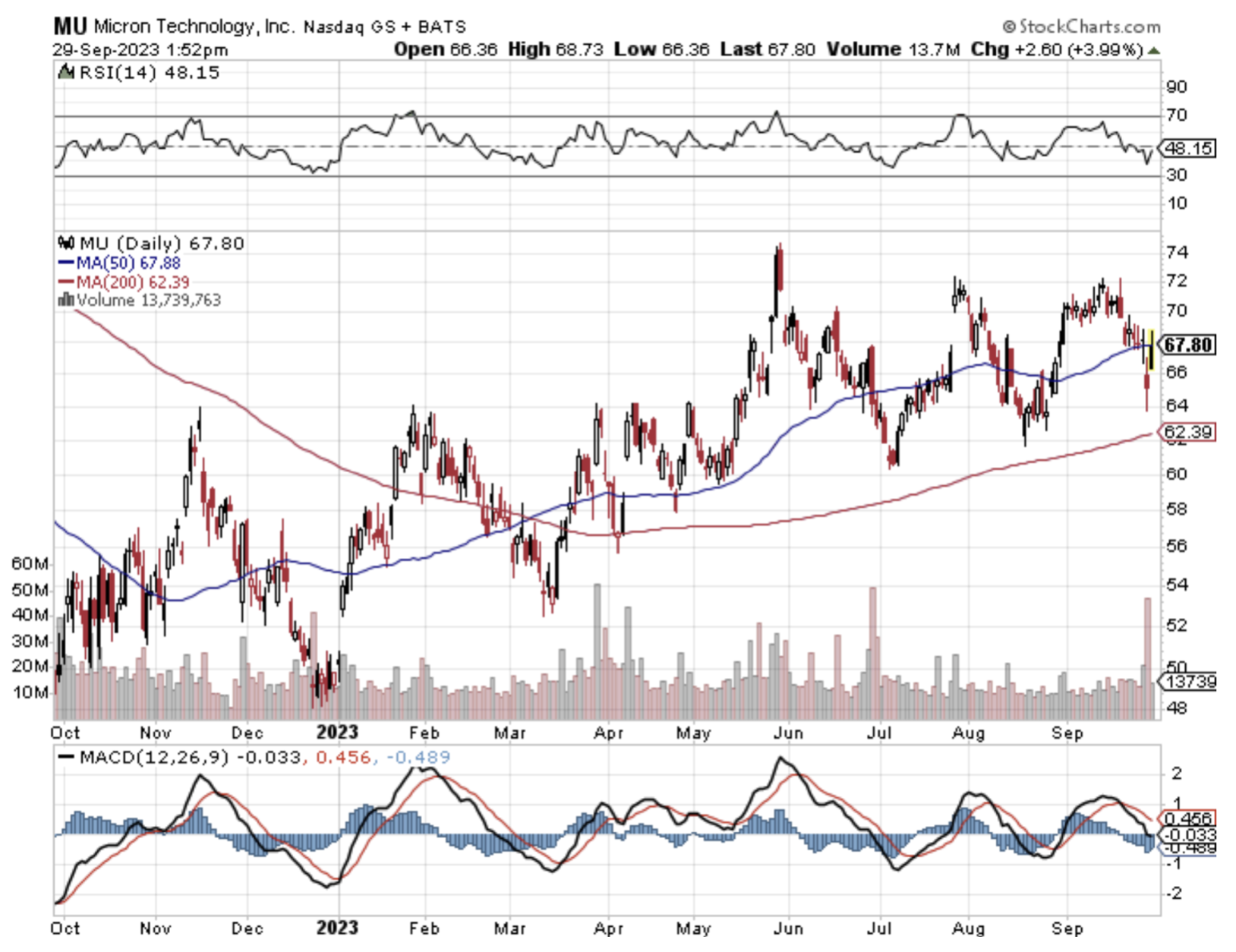

Global Trading Dispatch
May 3, 2022
Fiat Lux
Featured Trade:
(FRIDAY, MAY 20 SAN FRANCISCO STRATEGY LUNCHEON)
(A BUY WRITE PRIMER), (AAPL)

Mad Hedge Technology Letter
May 2, 2022
Fiat Lux
Featured Trade:
(ANOTHER TECH SUPPLY SHOCK)
(SOXX)

Mad Hedge Technology Letter
May 18, 2020
Fiat Lux
Featured Trade:
(CHINA’S BIG SEMICONDUCTOR PLAY),
(SMH), (SOXX), (DOCU), (AKAM), (NVDA), (AMD), (XLNX)

We received a convincing data point as to why we trade cloud companies and not the semiconductor chips.
The rift between blacklisted telecom equipment giant Huawei Technologies and the U.S. administration has had a dramatic side-effect on the business models of U.S. chip companies.
The U.S. commerce department now will require licenses for sales to Huawei of semiconductors made abroad with U.S. technology signaling more turbulent times ahead.
Huawei is the Chinese smartphone maker and telecom provider who has stolen intellectual property from the West and used mammoth subsidies funded by the Chinese communist party to build itself into one of the premier telecom equipment sellers and number two maker of smartphones in the world.
I seldom issue trade alerts on semiconductor chip companies because I'd rather not compete with the Chinese communist party and their capital funding capacity.
China is hellbent on subsidizing its own chip capacity as many Western chip companies are blocked from doing deals with them.
A recent example is the Chinese communist party injecting $2.25 billion into a Semiconductor Manufacturing International Corp. wafer plant to ramp up development in the sector.
To read about this, click here.
Exploiting the economic freedom and laws of the West has worked out perfectly for Chinese tech enabling them to develop juggernauts like Tencent and Baidu.
In fact, state-sponsored hacking of Western intellectual property is not considered a malicious activity in China.
There is the Chinese notion that everything is fair game in business and war and protecting company secrets falls on the shoulders of the cybersecurity sector.
To read more about the fallout in the West from China’s aggressive trade strategy, click here.
The concept that you should only blame yourself if you allow your secrets to get stolen prevails in China.
The consequences are impactful with U.S. chip companies suffering large drops in revenue without notice.
Leading up to the coronavirus, chip companies experienced a revenue slide of 12% in 2019 to $412 billion largely due to the trade war.
An example is Xilinx Inc. (XLNX) who will fire 7% of its workforce citing lower revenue from Huawei and delayed adoption of superfast 5G networks.
Along with the West getting smacked by the trade war, the ripple effect of increased uncertainty and guide-downs across the semiconductor supply stems from China’s economy being hit even worse than the U.S. economy.
There are no winners here and it will be a hard slog back from the nadir.
Either way, the sabre-rattling doesn’t stop here and each tweet and counterpunch will cause heightened volatility in chip shares.
Then consider that the existence of supply chains will most likely uproot, and we got indication of that type of activity with Taiwan Semiconductor’s (TSM) announcement to build a new chip factory in Phoenix.
To read more about this impactful deal then click here.
This would have never happened during prior administrations where all manufacturing was offshored to China.
As it stands, China has been circumventing existing U.S. law to clampdown chip sales by buying U.S. chips from 3rd party channels.
Once many of the supply chains come back, it will be almost impossible for Chinese to procure those same chips.
The Taiwan semiconductor manufacturing facility in Arizona will ultimately employ 1,600 high-tech workers.
Building is slated for 2021 with production targeted to begin in 2024.
Moving forward, the U.S. administration will make it implausible for many U.S. chip companies to offshore using the reasons of national security and domestic job demand to ensure that many factories are rerouted back to U.S. shores.
The boom and bust nature of chip companies make for treacherous spikes and drops in share prices.
The insane volatility is why I stay away from them as the Mad Hedge Technology Letter mainly opts for short-term options trades.
Nvidia (NVDA) and AMD (AMD) are great individual chip stocks that I would encourage readers to buy and hold.
Another option is to just park your money in the semi ETF VanEck Vectors Semiconductor ETF (SMH) or iShares PHLX Semiconductor ETF (SOXX).
On the flip side, cloud stock’s backbone of recurring monthly revenue is just too savory.
The constant cash flow with minimal international risk along with pristine balance sheets is what makes U.S. cloud companies top on the list of trade alert candidates.
That won’t stop anytime soon as the pandemic has offered us more conviction into the moat between cloud stocks and the rest of technology.
I apologize if I sound like a broken record, but I love my Akamai’s (AKAM) and DocuSign’s (DOCU), they have the growth portfolio that backs up my thesis.
Buy cloud stocks on the dip.
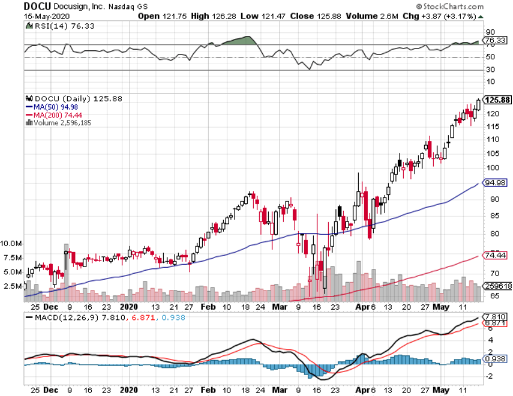
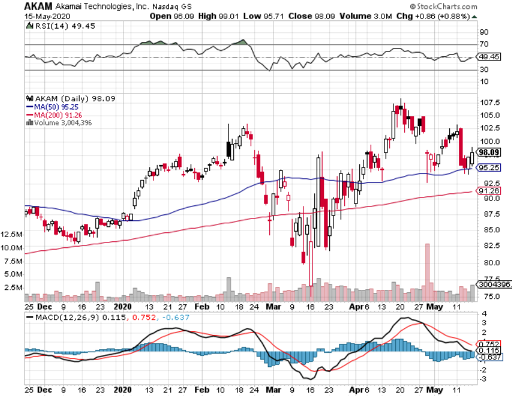
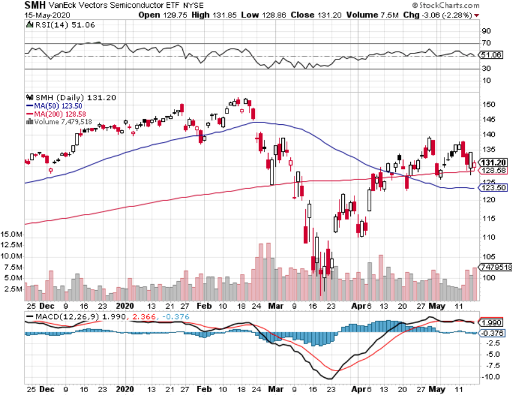
Mad Hedge Technology Letter
January 28, 2019
Fiat Lux
Featured Trade:
(BUY DIPS IN SEMIS, NOT TOPS),
(XLNX), (LRCX), (AMD), (TXN), (NVDA), (INTC), (SOXX), (SMH), (MU), (QQQ)

Don’t buy the dead cat bounce – that was the takeaway from a recent trading day that saw chips come alive with vigor.
Semiconductor stocks had their best day since March 2009.
The price action was nothing short of spectacular with names such as chip equipment manufacturer Lam Research (LRCX) gaining 15.7% and Texas Instruments (TXN) turning heads, up 6.91%.
The sector was washed out as the Mad Hedge Technology Letter has determined this part of tech as a no-fly zone since last summer.
When stocks get bombed out at these levels - sometimes even 60% like in Lam Research’s case, investors start to triage them into a value play and are susceptible to strong reversal days or weeks in this case.
The semi-conductor space has been that bad and tech growth has had a putrid last six months of trading.
In the short-term, broad-based tech market sentiment has turned positive with the lynchpins being an extremely oversold market because of the December meltdown and the Fed putting the kibosh on the rate-tightening plan.
Fueled by this relatively positive backdrop, tech stocks have rallied hard off their December lows, but that doesn’t mean investors should take out a bridge loan to bet the ranch on chip stocks.
Another premium example of the chip turnaround was the fortune of Xilinx (XLNX) who rocketed 18.44% in one day then followed that brilliant performance with another 4.06% jump.
A two-day performance of 22.50% stems from the underlying strength of the communication segment in the third quarter, driven by the wireless market producing growth from production of 5G and pre-5G deployments as well as some LTE upgrades.
Give credit to the company’s performance in Advanced Products which grew 51% YOY and universal growth across its end markets.
With respect to the transformation to a platform company, the 28-nanometer and 16-nanometer Zynq SoC products expanded robustly with Zynq sales growing 80% YOY led by the 16-nanometer multiprocessor systems-on-chip (MPSoC) products.
Core drivers were apparent in the application in communications, automotive, particularly Advanced Driver Assistance Systems (ADAS) as well as industrial end markets.
Zynq MPSoC revenues grew over 300% YOY.
These positive signals were just too positive to ignore.
Long term, the trade war complications threaten to corrode a substantial chunk of chip revenues at mainstay players like Intel (INTC) and Nvidia (NVDA).
Not only has the execution risk ratcheted up, but the regulatory risk of operating in China is rising higher than the nosebleed section because of the Huawei extradition case and paying costly tariffs to import back to America is a punch in the gut.
This fragility was highlighted by Intel (INTC) who brought the semiconductor story back down to earth with a mild earnings beat but laid an egg with a horrid annual 2019 forecast.
Intel telegraphed that they are slashing projections for cloud revenue and server sales.
Micron (MU) acquiesced in a similar forecast calling for a cloud hardware slowdown and bloated inventory would need to be further digested creating a lack of demand in new orders.
Then the ultimate stab through the heart - the 2019 guide was $1 billion less than initially forecasted amounting to the same level of revenue in 2018 - $73 billion in revenue and zero growth to the top line.
Making matters worse, the downdraft in guidance factored in that the backend of the year has the likelihood of outperforming to meet that flat projection of the same revenue from last year offering the bear camp fodder to dump Intel shares.
How can firms convincingly promise the back half is going to buttress its year-end performance under the drudgery of a fractious geopolitical set-up?
This screams uncertainty.
Love them or crucify them, the specific makeup of the semiconductor chip cycle entails a vulnerable boom-bust cycle that is the hallmark of the chip industry.
We are trending towards the latter stage of the bust portion of the cycle with management issuing code words such as “inventory adjustment.”
Firms will need to quickly work off this excess blubber to stoke the growth cycle again and that is what this strength in chip stocks is partly about.
Investors are front-running the shaving off of the blubber and getting in at rock bottom prices.
Amalgamate the revelation that demand is relatively healthy due to the next leg up in the technology race requiring companies to hem in adequate orders of next-gen chips for 5G, data servers, IoT products, video game consoles, autonomous vehicle technology, just to name a few.
But this demand is expected to come online in the late half of 2019 if management’s wishes come true.
To minimize unpredictable volatility in this part of tech and if you want to squeeze out the extra juice in this area, then traders can play it by going long the iShares PHLX Semiconductor ETF (SOXX) or VanEck Vectors Semiconductor ETF (SMH).
In many cases, hedge funds have made their entire annual performance in the first month of January because of this v-shaped move in chip shares.
Then there is the other long-term issue of elevated execution risks to chip companies because of an overly reliant manufacturing process in China.
If this trade war turns into a several decades affair which it is appearing more likely by the day, American chip companies will require relocating to a non-adversarial country preferably a democratic stronghold that can act as the fulcrum of a global supply chain channel moving forward.
The relocation will not occur overnight but will have to take place in tranches, and the same chip companies will be on the hook for the relocation fees and resulting capex that is tied with this commitment.
That is all benign in the short term and chip stocks have a little more to run, but on a risk reward proposition, it doesn’t make sense right now to pick up pennies in front of the steamroller.
If the Nasdaq (QQQ) retests December lows because of global growth falls off a cliff, then this mini run in chips will freeze and thawing out won’t happen in a blink of an eye either.
But if you are a long-term investor, I would recommend my favorite chip stock AMD who is actively draining CPU market share from Intel and whose innovation pipeline rivals only Nvidia.
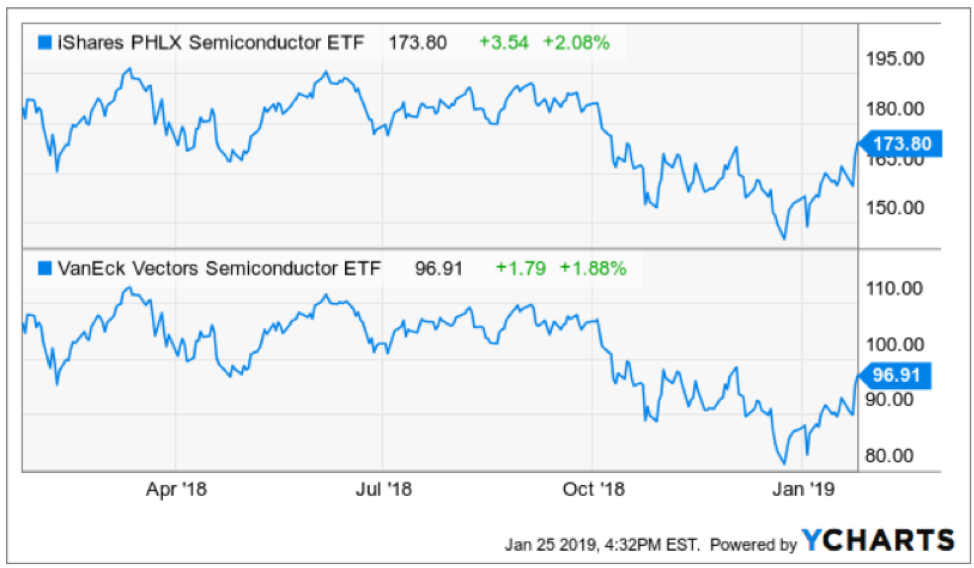
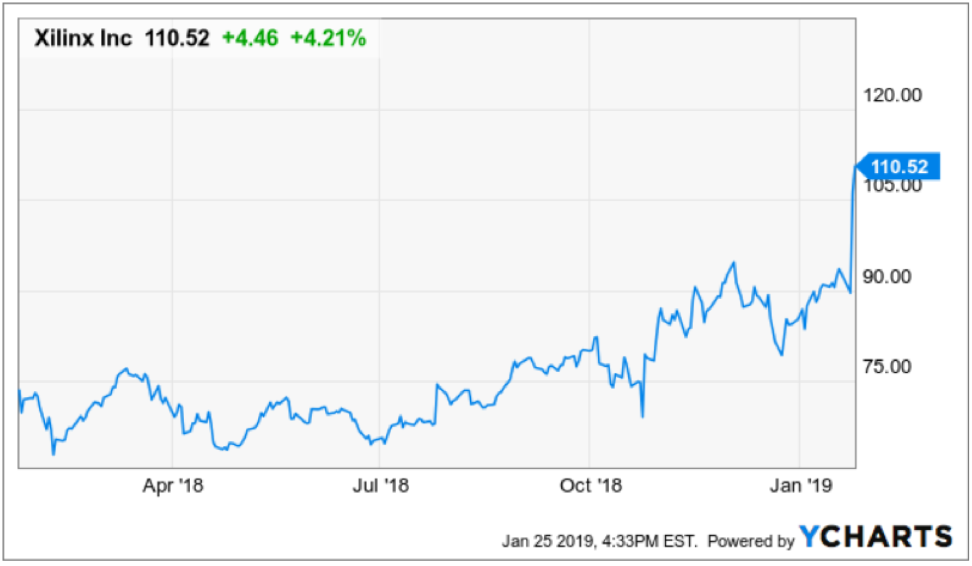


Legal Disclaimer
There is a very high degree of risk involved in trading. Past results are not indicative of future returns. MadHedgeFundTrader.com and all individuals affiliated with this site assume no responsibilities for your trading and investment results. The indicators, strategies, columns, articles and all other features are for educational purposes only and should not be construed as investment advice. Information for futures trading observations are obtained from sources believed to be reliable, but we do not warrant its completeness or accuracy, or warrant any results from the use of the information. Your use of the trading observations is entirely at your own risk and it is your sole responsibility to evaluate the accuracy, completeness and usefulness of the information. You must assess the risk of any trade with your broker and make your own independent decisions regarding any securities mentioned herein. Affiliates of MadHedgeFundTrader.com may have a position or effect transactions in the securities described herein (or options thereon) and/or otherwise employ trading strategies that may be consistent or inconsistent with the provided strategies.
This site uses cookies. By continuing to browse the site, you are agreeing to our use of cookies.
OKLearn moreWe may request cookies to be set on your device. We use cookies to let us know when you visit our websites, how you interact with us, to enrich your user experience, and to customize your relationship with our website.
Click on the different category headings to find out more. You can also change some of your preferences. Note that blocking some types of cookies may impact your experience on our websites and the services we are able to offer.
These cookies are strictly necessary to provide you with services available through our website and to use some of its features.
Because these cookies are strictly necessary to deliver the website, refuseing them will have impact how our site functions. You always can block or delete cookies by changing your browser settings and force blocking all cookies on this website. But this will always prompt you to accept/refuse cookies when revisiting our site.
We fully respect if you want to refuse cookies but to avoid asking you again and again kindly allow us to store a cookie for that. You are free to opt out any time or opt in for other cookies to get a better experience. If you refuse cookies we will remove all set cookies in our domain.
We provide you with a list of stored cookies on your computer in our domain so you can check what we stored. Due to security reasons we are not able to show or modify cookies from other domains. You can check these in your browser security settings.
These cookies collect information that is used either in aggregate form to help us understand how our website is being used or how effective our marketing campaigns are, or to help us customize our website and application for you in order to enhance your experience.
If you do not want that we track your visist to our site you can disable tracking in your browser here:
We also use different external services like Google Webfonts, Google Maps, and external Video providers. Since these providers may collect personal data like your IP address we allow you to block them here. Please be aware that this might heavily reduce the functionality and appearance of our site. Changes will take effect once you reload the page.
Google Webfont Settings:
Google Map Settings:
Vimeo and Youtube video embeds:
